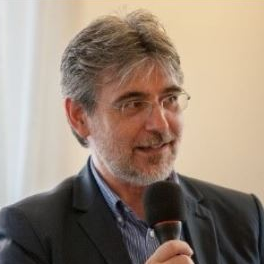Sustainability of Wastewater Treatment Processes and Management: Past, Present and Future
A special issue of Sustainability (ISSN 2071-1050). This special issue belongs to the section "Resources and Sustainable Utilization".
Deadline for manuscript submissions: closed (20 December 2013) | Viewed by 165885
Special Issue Editors
2. Union of Hellenic Water Supply and Sewerage Operators, 41222 Larissa, Greece
Interests: wastewater treatment and water reuse; small and decentralized wastewater management systems; water technologies in ancient civilizations
Special Issues, Collections and Topics in MDPI journals
Interests: circular economy; environmental communication; life-cycle assessment; recycling; waste management; water and wastewater in ancient civilizations; water supply
Special Issues, Collections and Topics in MDPI journals
Special Issue Information
Dear Colleagues,
The appropriate management and treatment of wastewater is fundamental because it directly and indirectly affects human development. The purpose of this Special Issue is to discuss the sustainability of wastewater treatment processes and management looking back at the past (from ancient civilizations to modern times), critically evaluating the state-of-the art and arguing on the future perspectives. The first successful effort in wastewater management was the wastewater drainage of the early cities in the East. During the Bronze Age, wastewater management was practiced in several Minoan palaces and settlements in modern day Crete. The Romans were masters in water and wastewater engineering. Passing from the old world to the modern, one of the most revolutionary inventions in the sanitary field was the water closet. The 20th Century saw the development of wastewater treatment processes (e.g., Imhoff tank, trickling filter, activate sludge process, etc.). In the future, the sustainability of wastewater treatment processes and management can be effectively pursued creating the condition for the coexistence of natural (e.g., constructed wetlands) and advanced processes (e.g., membrane biological reactor). This challenge is particularly important for developing countries. History can be of great help, learning from past mistakes and rediscovering ancient sustainable technologies.
Dr. Giovanni De Feo
Dr. Andreas N. Angelakis
Guest Editors
Manuscript Submission Information
Manuscripts should be submitted online at www.mdpi.com by registering and logging in to this website. Once you are registered, click here to go to the submission form. Manuscripts can be submitted until the deadline. All submissions that pass pre-check are peer-reviewed. Accepted papers will be published continuously in the journal (as soon as accepted) and will be listed together on the special issue website. Research articles, review articles as well as short communications are invited. For planned papers, a title and short abstract (about 100 words) can be sent to the Editorial Office for announcement on this website.
Submitted manuscripts should not have been published previously, nor be under consideration for publication elsewhere (except conference proceedings papers). All manuscripts are thoroughly refereed through a single-blind peer-review process. A guide for authors and other relevant information for submission of manuscripts is available on the Instructions for Authors page. Sustainability is an international peer-reviewed open access semimonthly journal published by MDPI.
Please visit the Instructions for Authors page before submitting a manuscript. The Article Processing Charge (APC) for publication in this open access journal is 2400 CHF (Swiss Francs). Submitted papers should be well formatted and use good English. Authors may use MDPI's English editing service prior to publication or during author revisions.
Keywords
- activated sludge
- ancient civilizations
- constructed wetlands
- developing countries
- membrane biological reactor
- sewer
- sustainability
- toilet
- trickling filter
- wastewater






